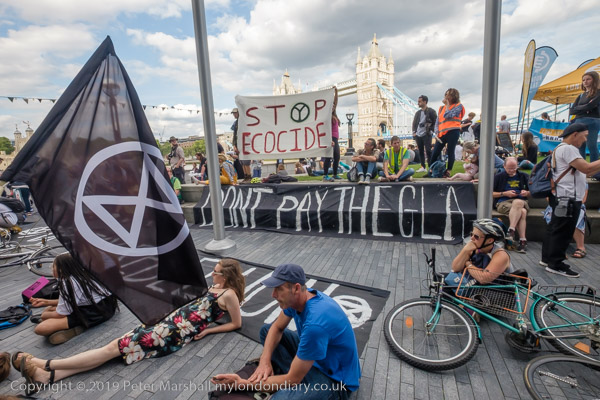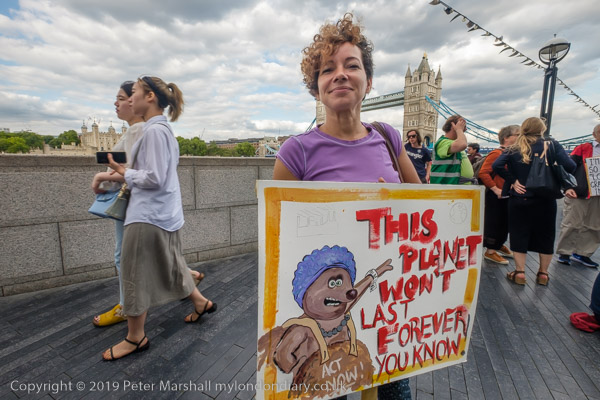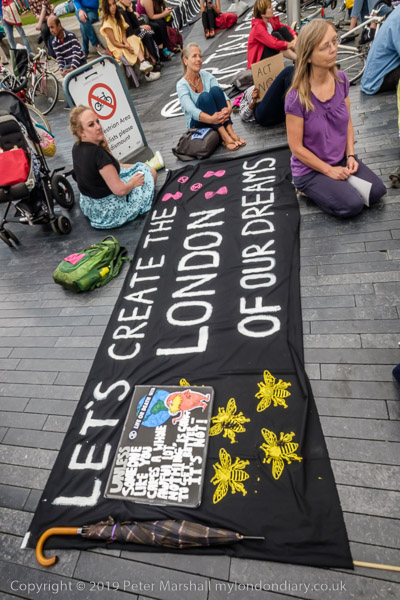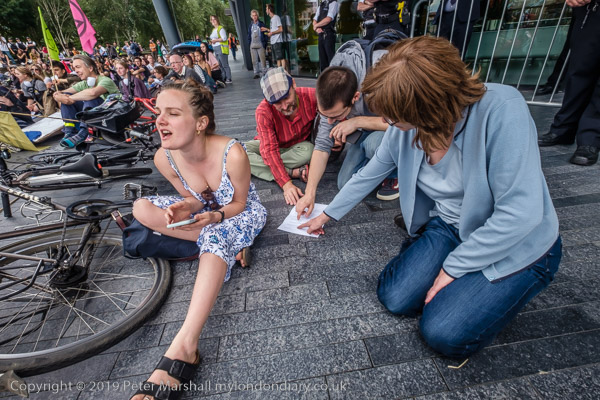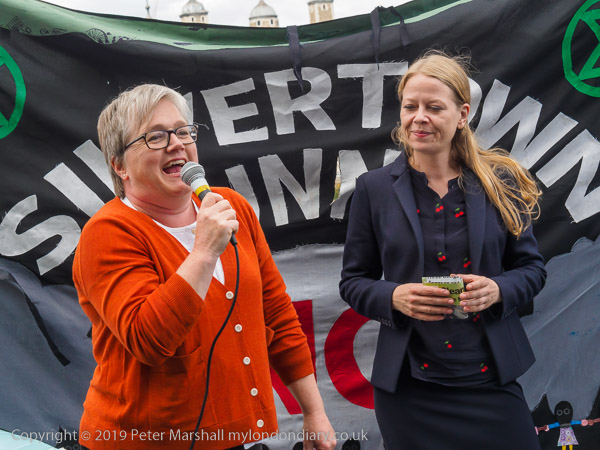On Friday 29th November 2013 I went to two very different protests in London.
Islamists Protest Angolas Ban on Muslims – Angolan Embassy, Friday 29th November 2013
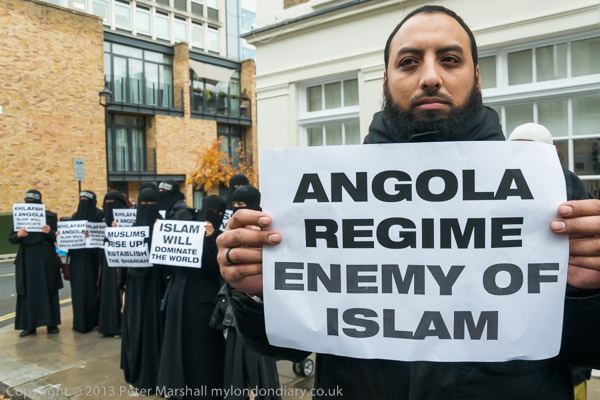
I’d had an interest in the rise of extremist Islamic movements in the UK since 2004, when I first photographed a march by Hizb ut-Tahrir Britain, and the activities of Anjem Choudary had attracted my attention for some years before this event in 2013. In 1996 he had been one of the founders of the Islamist al-Muhajiroun, an organisation which dissolved itself shortly before it was banned by the UK government as a terrorist organisation in 2010, going on to found a series of new organisations considered by many to be al-Muhajiroun under different names.
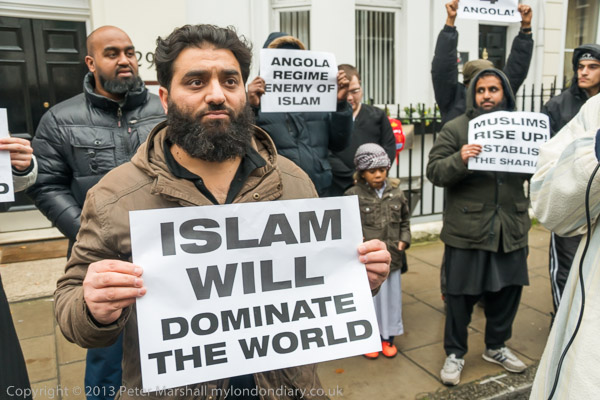
I can’t now remember under what title Choudary had announced ‘DEMONSTRATION AGAINST THE CHRISTIAN TYRANNY UPON MUSLIMS IN ANGOLA!’; another group he was associated with, Muslims Against Crusades, had been banned in November 2011, but I think many of those at this protest were the same individuals. The many posters they held named no organisation.
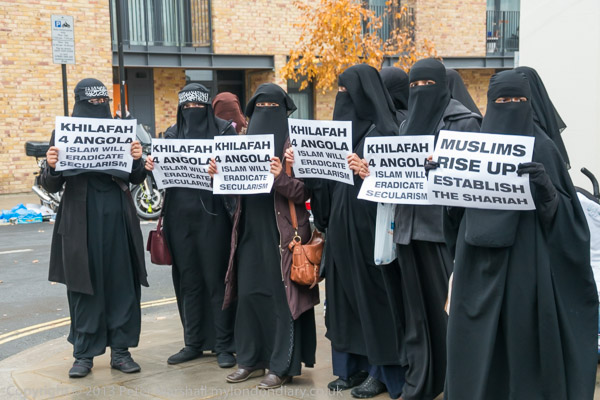
I’d gone to the Regents Park Mosque where a march had been announced to start to the Angolan Embassy, but as the crowds emerged after Friday prayers there was no sign of Choudary or his followers. Asking people there I learnt a small group had been present earlier but had left before the time announced and I gathered it had been made clear they were not welcome at the mosque.
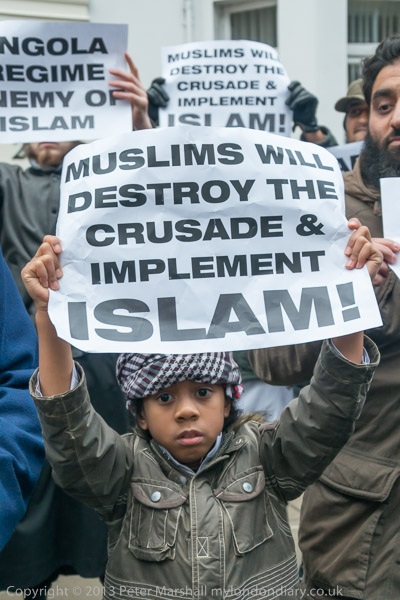
I hurried down to the Angolan Embassy in Dorset Street, arriving to find a noisy demonstration taking place, but with no sign of Choudary. Another photographer told me I had missed them setting off firecrackers when they arrived. There were some loud chants echoing the message on the placards that ‘Muslims Will Destroy The Crusade & Implement ISLAM!’
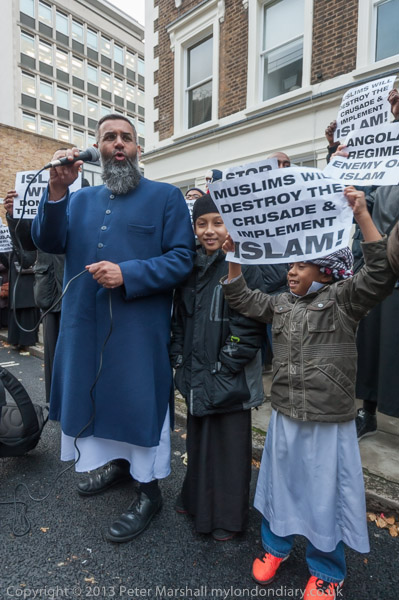
As I wrote in the captions, “I came to the protest thinking for once that Amjem Choudary and his supporters had a just cause – Angola is clamping down on non-Christian religions including Islam. But it isn’t a ‘crusade’ but something that most Christians around the world and secularists would firmly oppose. But they would oppose it in the name of freedom. This was something rather different.
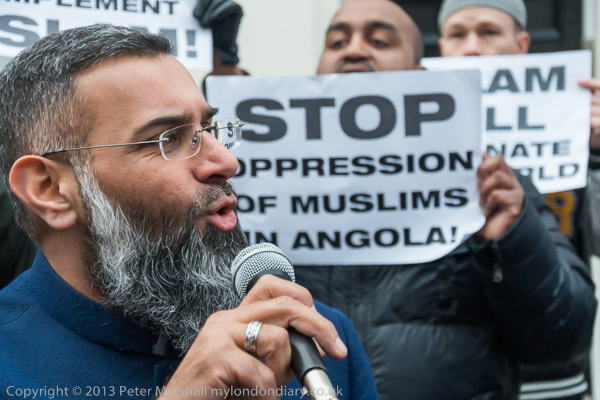
Finally Choudary himself arrived and began a lengthy speech. It was interesting and there was much that many including myself would agree with, as the Angolan regime has embarked on a purge of all non-Christian religions in the country. According to a report in The Guardian, there are only 83 approved religious organisations in Angola, every one of them Christian, and a statement from the Angolan embassy in the US claimed that they had ‘lots of religions’, citing “Catholic, Protestants, Baptists, Muslims and evangelical people.” In other words, freedom of religion – so long as it is Christian.
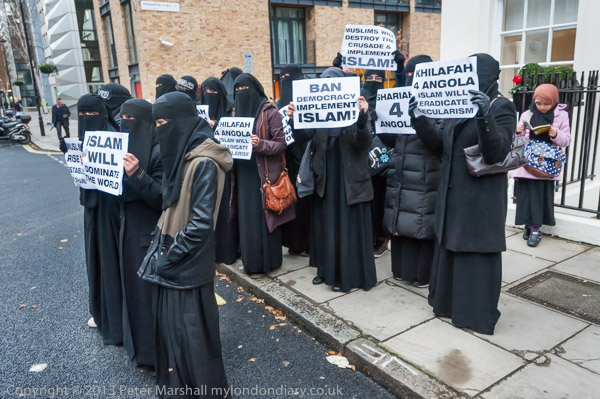
But what Choudary and his supporters advocate is not freedom of religion but the establishment of an Islamic Khilafah (caliphate), establishing Sharia law, where the only religion tolerated would be their extremist distortion of Islam. There was something new in his speech, when he talked about Islamic armies rising to “establish the Sharia” which at the time I thought was just wishful thinking on his part, but was in fact a chilling reality which became obvious as ISIS rose to occupy not Angola but a large territory in the Middle East around six months later.
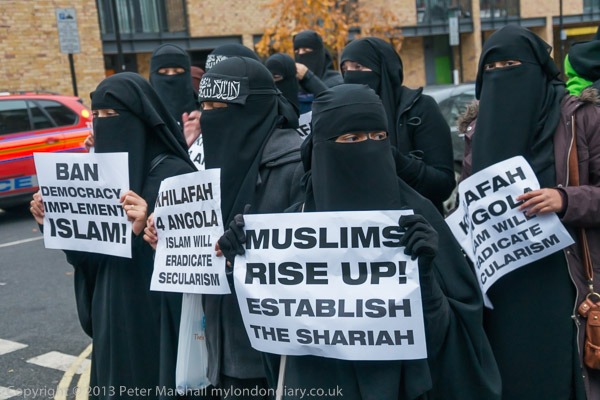
Many of us were convinced in 2013 that Choudary was, if not an MI5 agent, at least protected by them and the police as a ‘honeypot’ for Islamic extremists, gathering them together to enable them to be readily recognised and kept under observation. It’s difficult to see otherwise why he had not been arrested for some of thee statements in his speeches at protests, careful though he was. But it was the rise of ISIS and his support expressed for Islamic State that led to his eventual arrest and sentencing in 2016 for five and a half years under the Terrorism Act 2000.
Islamists Protest Angolas Ban on Muslims
Cyclists ‘Die in’ at TfL HQ – Blackfriars Rd,
Friday 29th November 2013
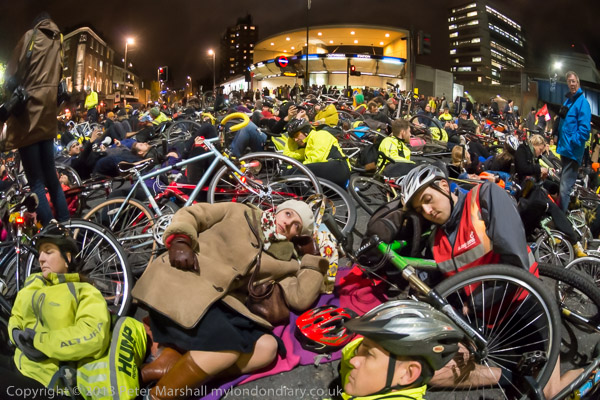
Cyclists are the most vulnerable of road users, riding unprotected among cars and lorries whose drivers are cased in powerful and heavy metal shells. Pedestrians also lack any protection, but are usually provided with pavements which cyclists cannot legally use.
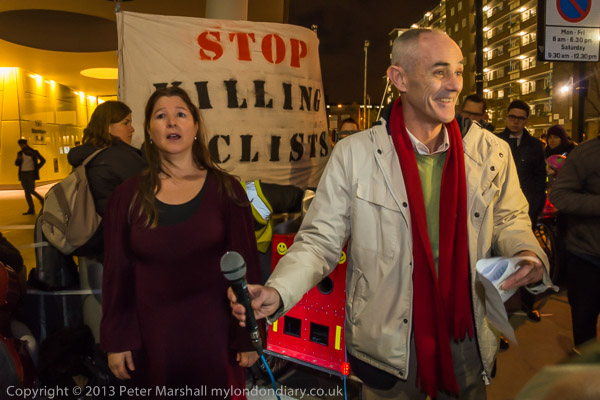
That of course is stating the obvious, but it’s an obvious that is almost always obscured by heated anti-cyclist opinions forcefully expressed, about cyclists who get in the way of motorists, or who ride aggressively on pavements, cross red lights and fail to wear cycle helmets etc.
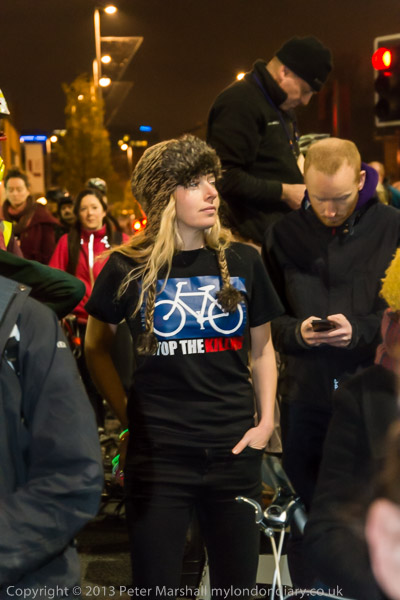
I write as a cyclist and a pedestrian, and a former if reluctant driver. As the latest Highway Code makes even clearer, cyclists have a right to be on the road and are a part of traffic just as much as any car or lorry. And there are probably about as many bad cyclists as there are bad drivers, perhaps rather more given the number of people too young to get a driving licence who ride bikes.
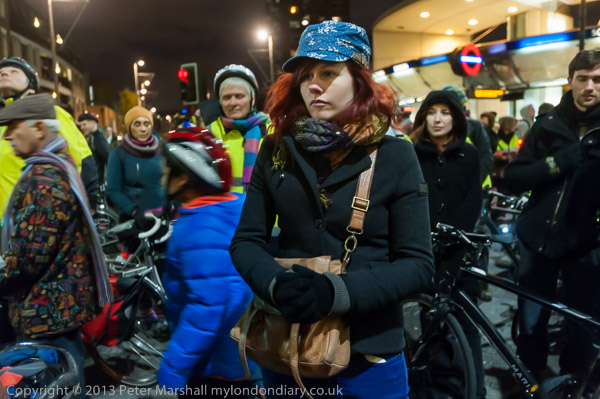
We now have many shared paths for bicycles and pedestrians and accidents on them are rare, and very seldom cause significant injuries to either party, though the few that do get great publicity. Many of us also occasionally ride on pavements which are not officially shared, and do so with care for those on foot, in places where the roadway is dangerous and there is no separate provision for cyclists. I won’t get into cycle helmets in depth, but they provide little protection and may well decrease the safety of cyclists as well as making cycling a rather less convenient activity. And the emphasis on their use is simply trying to put the blame on the victims of road accidents rather than trying to make the roads safe.
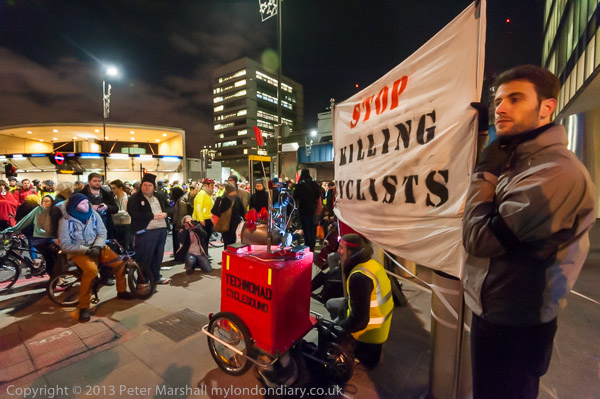
There are many reasons why cycling should be encouraged and proper facilities provided. It improves the health of those who cycle and leads to a cut in expenditure on health services, is an almost non-polluting form of transport and much more efficient in the use of road space, reducing congestion for others, and a cheap solution particularly to many shorter distances in cities. Many cities have become better places to live by welcoming and providing proper provision for cycling.
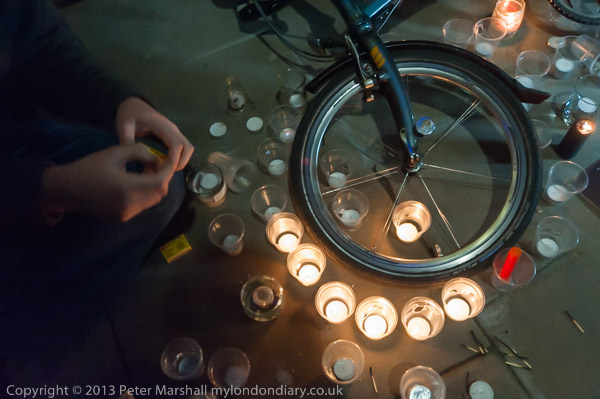
The protest outside the London HQ of TfL demanded safer road provision for cyclists. It was organised after 14 cyclists had been killed in London over the previous years. For more than 50 years the design and provision of roads has been almost entirely based on increasing the flow of motorised vehicles, with other considerations being largely ignored. And faster traffic becomes more dangerous for pedestrians and cyclists – congestion actually makes cycling in central London safer.
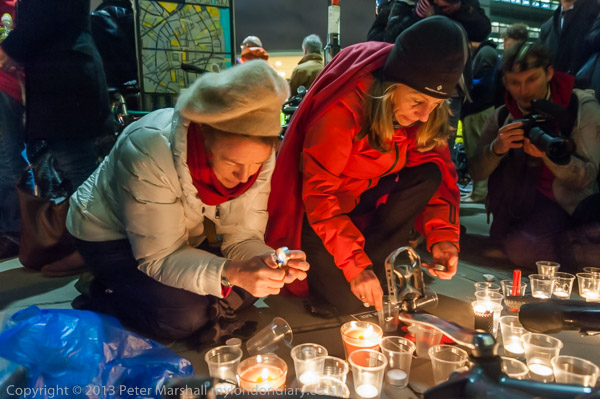
Even where TfL has begun to provide cycle ‘superhighways’, these have been badly designed at many junctions, and marked cycle paths are often used as parking places, forcing cyclists into the heavy traffic the path is meant to avoid. Some cycle lanes in my area are far too narrow and on uneven road edges making them dangerous to ride on even where they are not obstructed by parked vehicles, others have stop signs at every minor road or even injunctions to dismount.
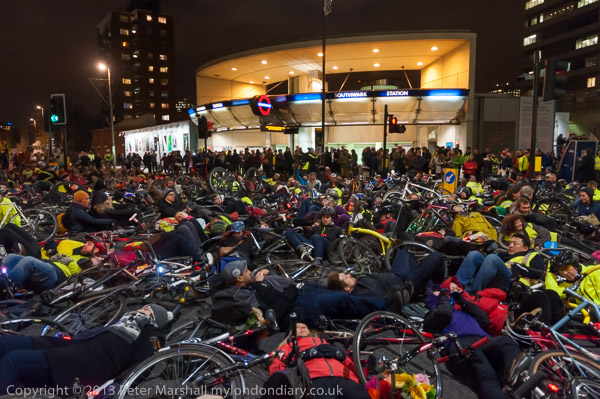
On My London Diary you can read the list of eight demands the protest made to improve safety and get more people using bikes. As well as spending more money on cycling infrastructure they included a ban on vehicles whose drivers are unable to see adjacent road users. Most deaths of cyclists are caused by drivers who turn left at junctions unaware that there is a someone on a bike in their path.
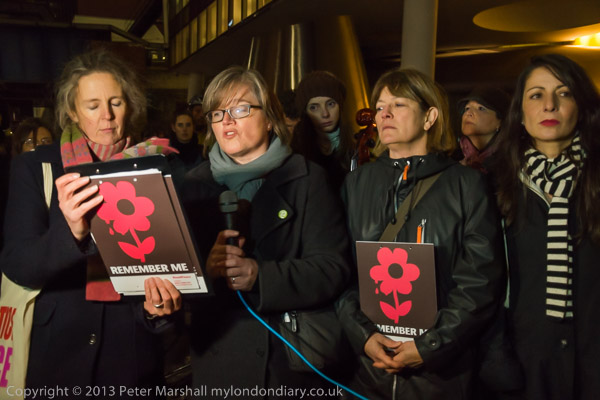
After a short introduction to the event there was a long silent vigil while a cellist played solemn music, and those who had brought candles came and lit them around a bicycle. Then there was a speech reminding us that Amsterdam had become a much more pleasant city with high bicycle use following a series of protests in the 1970s had prompted the city into action – with die-ins such as that which followed. Police at the scene estimated a thousand bicycles and cyclists took part, though organisers thought it was double this. The BBC reported it as ‘hundreds’ in a typical media response to cyclists and protests. Then the rally continued, with more speeches and the reading out of the names of cyclists killed on the streets.
More at Cyclists ‘Die in’ at TfL HQ.
